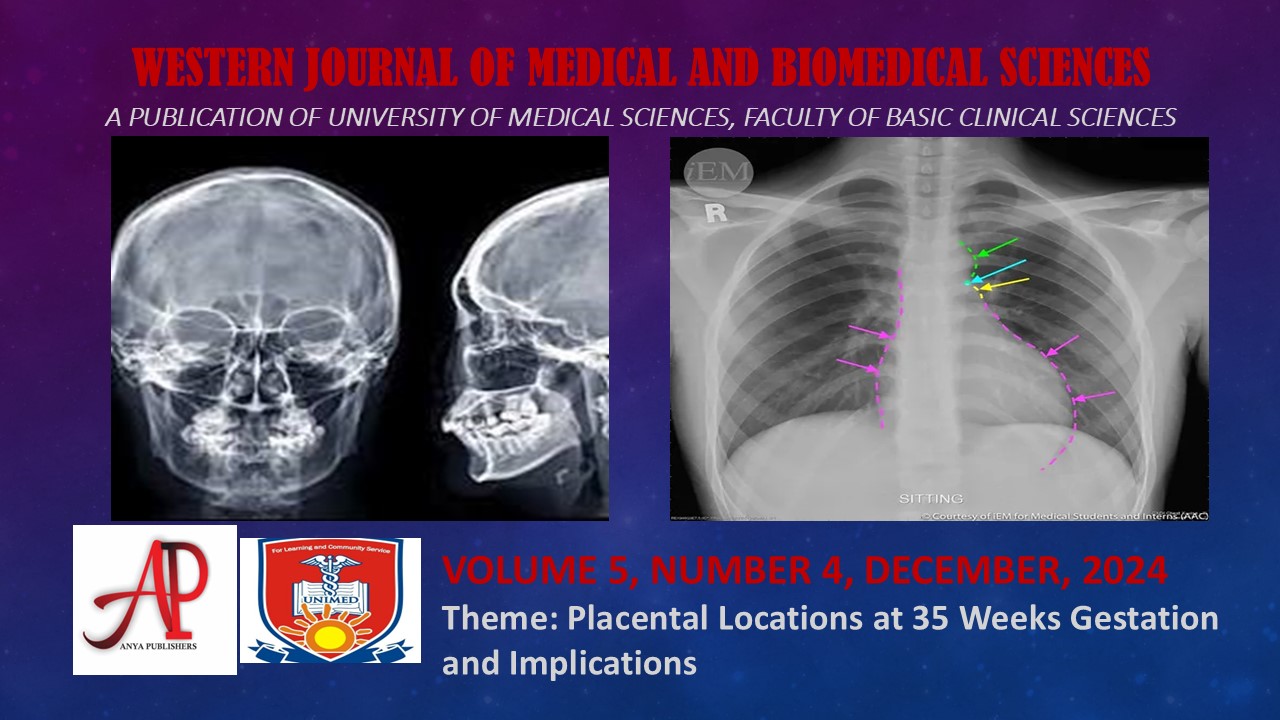Assessment of Common Placental Locations After 35 Weeks Gestation Using Ultrasound Findings: A One-Year Retrospective Study at Irrua Specialist Teaching Hospital (ISTH), Irrua, Nigeria
Keywords:
Placenta, Pregnancy, Ultrasound ScanAbstract
Nigeria's over 40 million women of childbearing age suffer a disproportionally high level of health issues surrounding birth and currently contributes up to 10 per cent of global deaths for pregnant mothers. Child delivery conducted without proper knowledge of the placental position and adequate management techniques could result in severe bleeding and other complications before, during and after deliveries, which is a major cause of maternal mortality. Ultrasonographic (US) examination of the placenta during pregnancy is vital because it helps to ascertain the location of the placenta and any other identifiable abnormalities therein. The aim of this study was to identify the common placental positioning in pregnant women of greater than 35 weeks gestation. The study was a retrospective, non-experimental one which obtained data from the obstetric US Scan (USS) of female antenatal patients whose pregnancies were of greater than 35 weeks gestation and attended antenatal clinics at the Irrua Specialist Teaching Hospital (ISTH), Irrua from January 1 to December 31, 2021. The outcome showed that out of the 111 pregnant women, most were between ages 25 and 35 years old and their gestational ages were 36weeks+6days and 37weeks+2days accounted for the majority. As regards placental location, it was observed that all categories of placental positions were observed in this study except the low[1] lying. Furthermore, anterior and fundal placental positions were most predominant, accounting for over 80 % of the cases. In conclusion, it is encouraged that in all pregnancies, the Physician pays attention to placental location to enable the healthcare providers to prepare for possible complications that can arise from placenta positioning as this can help reduce maternal and neonatal mortality or morbidity.

